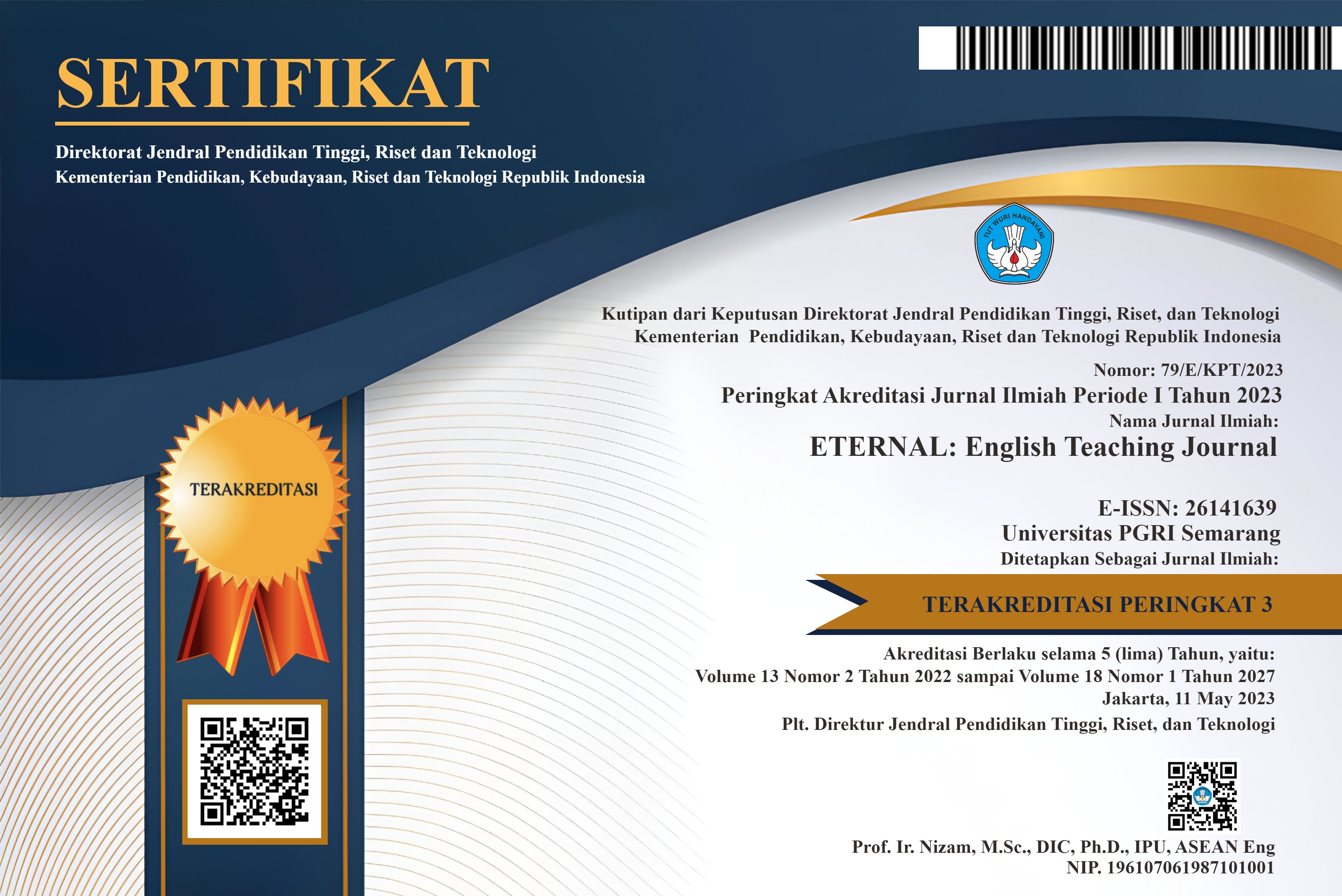The Development of Flipped Classroom Learning Design Assisted by Digital Storytelling Media in the Photography Course for Visual Communication Design Students in The Bachelor's Program at STIE Asia Malang
DOI:
https://doi.org/10.26877/eternal.v15i2.616Keywords:
Flipped Classroom Learning Design, Digital Storytelling Media, Photography CourseAbstract
This study aims to develop a flipped classroom instructional design assisted by digital storytelling media for the Photography course for undergraduate students of Visual Communication Design at STIE Asia Malang. The approach of project-based learning integrates the use of technology and active learning methods to enhance the effectiveness of learning. The Research and Development design used the instructional design proposed by Degeng & Degeng (2018). It divided into three phases of instructional design formation, namely 1) analysis of learning conditions, 2) development of learning strategies, 3) development of outcome measurement procedures. The results of the study show that this instructional design is effective in increasing student engagement and active participation. Students are more involved in the learning process, more motivated, and better able to apply the knowledge they have gained in real projects. Additionally, their learning outcomes significantly improved in both conceptual understanding and practical application. The efficiency of this design is also evident from the optimization of learning time, where students can utilize out-of-class time to study the materials, while in-class time is used for more interactive discussions and collaborative projects.
References
Abeysekera, L., & Dawson, P. (2015). Motivation and cognitive load in the flipped classroom: Definition, rationale and a call for research. Higher Education Research and Development, 34(1), 1–14.
Academy of Active Learning Arts and Sciences (2018). Updated definition of flipped learning. Retrieved August 8, 2019
Ahmed, A.K. (2019) Socially orientated digital storytelling among Saudi EFL learners: An analysis of its impact and content. Interact. Technol. Smart Educ., 16, 130–142
Asrori; Rusman. Classroom Action Research Pengembangan Kompetensi Guru. Pena Persada, 2020
Behmer, S (2005) Literature Review Digital storytelling: Examining the process with middle school students,
Girmen, P.; Özkanal, Ü.; Dayan, G. Digital Storytelling in the Language Arts Classroom. Univ. J. Educ. Res. 2019, 7, 55–65. [CrossRef]
Hughes, J. The role of teacher knowledge and learning experiences in forming technology-integrated pedagogy. J. Technol. Teach. Educ. 13, 277–302
Lambert, J. (2013). Digital storytelling: Capturing lives, creating community (4th ed.). New York, NY: Routledge.
Kamal, Nasrul (2019). Fotografi dalam Konteks Ilmu Desain Komunikasi Visual
Khasanah, F. R., Herlina, R., & Rustandi, A. (2023). The use of digital storytelling to stimulate learners’ listening comprehension. JEEP (Journal of English Education Program)/Journal of English Education Program, 10(2), 155. https://doi.org/10.25157/(jeep).v10i2.11693
Maddin, Ellen. “Using TPCK with Digital Story Issues in Educational Technology Digital Storytelling to Investigate Contemporary Issues in Educational Technology.” Journal of Instructional Pedagogies 7 (2012): 1– 11.
Stanley, N. Digital Storytelling, the TESOL Encyclopedia of English Language Teaching; Wiley-Blackwell: Hoboken, NJ, USA, 2018; pp. 1–7.
Smeda et al. (2014). Smart Learning Environments.
Robin, B. R. (2008). Digital storytelling: A powerful technology tool for the 21st century classroom. Theory into Practice, 47(3), 220-228.
Suherman, Cepy. (2009) .Mengenal Dunia Fotografi. Jakarta: Buana Cipta Pustaka.
Talbert, R. (2017). Flipped learning: A guide for higher education faculty. Sterling, VA: Stylus
M. Ubaidillah, Penerapan Flipped Classroom Berbasis Teknologi Informasi pada Mata Pelajaran Fiqih di MTs Al-Chusnaniyah Surabaya, (Surabaya: Jurnal Ilmu-Ilmu Keislaman, Vol. 19, No. 1, Juli 2019),
Nardi, Leo, Penunjang Pengetahuan Fotografi, (Bandung; Fotina Fotografika, 1989), h. 27
Gani & Kusumalestari, Jurnalistik Foto: Suatu Pengantar, (Jakarta; Balai Pustaka, 2014), h. 4
Lambert, Joe. (2013). Digital Storytelling : Capturing Lives, Creating Community. 4th Edition. New York: Routledge 711 Third Avenue
Seyfi, Murat & Soydaş, Ayda Uzunçarşılı. (2017). Instagram Stories From The Perspective Of Narative Transportation theory. The Turkish Online Journal of Design, Art and Communication. http://www. tojdac.org/tojdac/VOLUME7-ISSUE1.html
Heriyana, W., & Maureen, I. yolanita. (2014). Penerapan Metode Digital Storytelling pada Keterampilan Menceritakan Tokoh Idola Mata Pelajaran Bahasa Indonesia Siswa Kelas VII di SMP Negeri 1 Kedamean, Gresik, VOL 2, No, 1–9. Retrieved from http://ejournal.unesa.ac.id/index.php/jmtp/article/view/8471
Davey, N. G., & Benjaminsen, G. (2021). Telling Tales: Digital Storytelling as a tool for qualitative data interpretation and communication. International Journal of Qualitative Methods, 20, 160940692110225. https://doi.org/10.1177/16094069211022529Robin,
Bernard R. 2012. The Educational Uses Of Digital Storytelling.







